Every Living Mammal on this Planet has an Endocannabinoid System. The Cannabis Plant produces the most Cannabinoids, however these are called “Phyto cannabinoids”.
Thus, the effectiveness of Cannabis as a Medicine and many other things. This Fact in my Opinion was and still is the main hinderance to it being a Legal option for People to use for relief.
Verses getting into your Vehicle, using Gas, Oil and etc. Then Driving to a Drug Store to acquire a synthesized remedy. The Petroleum Industry and the Pharmaceutical Industry are two of the Largest Lobbyist in the World. I will let you figure that out…
Ethene Manipulation
Ethene, also known as Ethylene, is a plant hormone that can stimulate plant growth and flowering. However, in high concentrations, it can cause stress and inhibit growth. As a result, Cannabis Cultivators must carefully manage ethene levels in their growing environments. By manipulating ethene concentrations, cultivators can optimize the plant’s growth stages and achieve desirable outcomes.
For example, by reducing ethene levels during the vegetative stage, cultivators can promote vegetative growth, while increasing ethene levels during the flowering stage can trigger flowering and improve overall cannabinoid and terpene production. I apply high PPMs of Ethylene upon Seedling Emergence. And reduce concentrations to 2 ppb after initial implementation. I do not recommend a lot of Ethylene being applied during the Vegetative Growth Stage. You can take an Air Sample of your Grow Room Air and send this to a Lab.
Or Experiment like I do. In a 500 Plant Greenhouse Grow (Closed Circuit or Controlled Air Flow Grow) I will go to this local Plant that make dehydrated Banana Chips. Gather a Truck Load of Banana Peels (Free!). Then I will fill large Garbage Bags with the Peels and close the top for a few Days. Placing a 40 Kilo bag of Peels in each corner of the Grow and 4 in the Middle of the Grow.
Do this upon Seedling Growth and Flowing Stages.
After the Seeds have emerged, I will open these bags for a week or so until I cannot handle the smell any longer. I may do this again during Flowering. To my knowledge there is no where here in Thailand to buy “Contained” premade Ethylene. Ethylene is separated from Ethene and there is no technology yet here in Thailand for this.
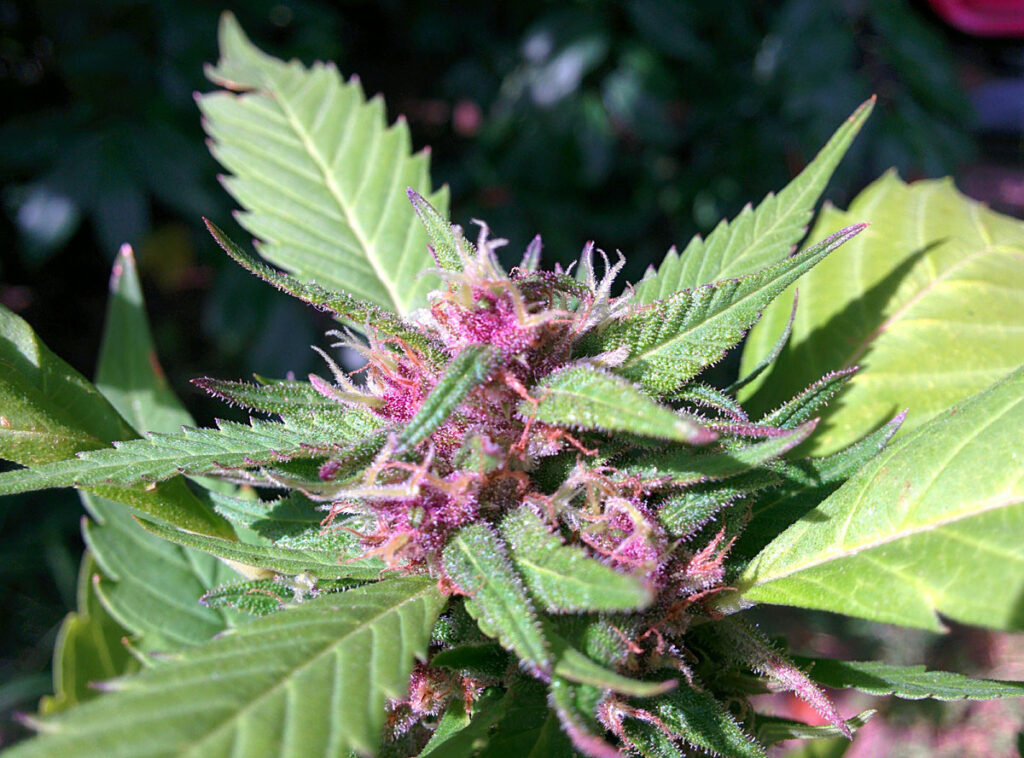
Ethylene is a gas and is measured in the laboratory using a gas chromatograph, an analytical instrument that can measure different components in a gaseous sample. Ethylene production can be measured non-destructively by placing a single, or multiple fruits, inside a sealed container. Then observe or test
After a determined amount of time, the gas inside the container is withdrawn with a syringe and analyzed with the gas chromatograph. For apples, a needle can be injected in the core cavity of the fruit and a gas sample is withdrawn for ethylene measurement. The amount of ethylene that a fruit produces can be used to determine the ripeness of a fruit and its storability potential.
There is not much information on the use of Ethylene in the Growing of Cannabis. It is primarily used in Fruit Production and Storage. Yet Cannabis makes Fruit (Buds) too. I can assure you that it is a Valuable Substance. I use it with every grow. Getting Better and Better!!
Carbon Dioxide Enrichment
Carbon dioxide (CO2) enrichment is a technique that involves increasing the concentration of CO2 in a cultivation environment. This can lead to increased photosynthesis rates, resulting in higher plant growth and improved cannabinoid and terpene production. CO2 enrichment can be achieved using various methods, such as air-based systems or closed-loop systems. As a result, this technique has become increasingly popular among Cannabis cultivators, leading to improved product quality and increased yields.
Carbon dioxide (CO2) enrichment has become an increasingly popular method for enhancing the growth and yield of Cannabis plants. This technique involves increasing the concentration of CO2 in the growing environment, which can lead to a variety of benefits for the plants and the overall cultivation process. In this essay, we will explore the concept of CO2 enrichment, along with the various Hormones used by the Cannabis Plant. Their effects on the Plants, and the potential benefits and drawbacks of implementing this practice.
What is Carbon Dioxide Enrichment?
Carbon dioxide enrichment is the process of increasing the levels of CO2 in the growing environment, typically by using a CO2 generator or by introducing CO2 gas directly into the space where the plants are being grown. This can be done manually or through the use of automated systems that monitor and regulate CO2 levels. The ideal concentration of CO2 for cannabis plants is typically between 1,000 to 1,500 parts per million (ppm).
Effects of Carbon Dioxide Enrichment on Cannabis Plants
Increased CO2 levels can have a significant impact on the growth and development of cannabis plants. Some of the key effects of CO2 enrichment include:
Increased Photosynthesis: As CO2 is the primary substrate for photosynthesis, increasing its availability can lead to a higher rate of photosynthesis. This can result in increased plant growth, biomass, and ultimately, higher yields. It all begins with the Uptake of Nutrients from the Roots. This is why the PH of your soil or growing Medium is extremely important.
Also understanding that some nutrients are “Mobile” throughout the Cannabis Plant and some Nutrients are not. Understanding which are mobile, and which are not will allow you to make Foliar Feeding Sprays that can supplement various needs. Using Fulvic Acid as a “Chelator” or “Carrier” making a dilute solution will allow the uptake or absorption of what ever your applying to absorb into the Plant better.
Always perform a “Test” area 1st before the application of whatever is being used upon the entire Grow. Nothing like a Good Ass Kicking to learn stuff!
Fulvic Acid is what I use as it has a smaller molecular structure than Humic Acid. Fulvic Acid is made from Humic Acid. Humis is a critical part of soil. I grow 100% organically. You will find that growing in a “Living Soil” you will end up with a superior Product. A Natural and consumable Flower. Fulvic Acid makes for an excellent Spray.
Improved Terpenoid and Cannabinoid Production: CO2 enrichment can also result in increased production of terpenoids and cannabinoids, the compounds responsible for the unique aroma and therapeutic properties of cannabis.
Force fed Grows like “Nutrient Injection” are not “Natural”. Cannabis likes Soil. I have found over the years that there are benefits to both methodologies. Yet you will learn that using a Living Soil, your end Product will have Higher Quality Cannabinoid Development, Flavor and Terpene Odor.
Improved Plant Health: CO2 enrichment can lead to stronger, more robust plants with improved resistance to stress and disease. This is likely due to the enhanced photosynthetic capacity of the plants, which allows them to better utilize nutrients and water.
Enhanced Flowering: Increased CO2 levels can also lead to improved flowering and a faster time to harvest. This is because the plants are able to take advantage of the increased photosynthetic capacity to produce more energy for growth and reproduction. You will also need to adjust your “Feeding”. Remember a Grow starts from the Rhizome.
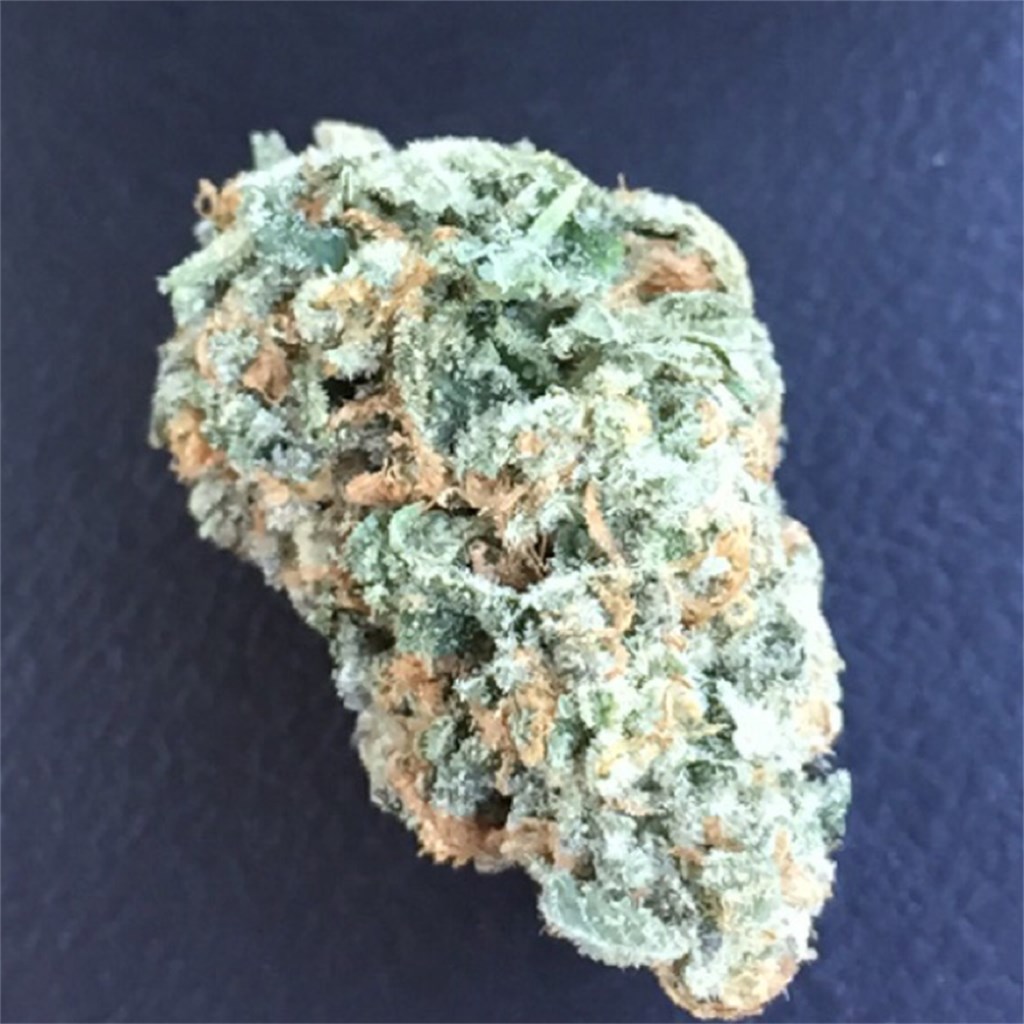
Me on my Farm in Hawaii (2012). Elevation 2300 feet.

Potential Benefits and Drawbacks of Carbon Dioxide Enrichment
While CO2 enrichment can lead to numerous benefits for cannabis plants, there are also some potential drawbacks to consider:
Cost: CO2 generators and other equipment required for CO2 enrichment can be expensive, especially for larger-scale operations. Additionally, the ongoing cost of purchasing CO2 gas can be significant.
Safety: Proper ventilation and safety precautions must be taken when using CO2 generators or introducing CO2 gas into a growing environment. High concentrations of CO2 can be harmful to humans and animals.
Environmental Impact: Some CO2 sources, such as fossil fuels, can contribute to greenhouse gas emissions and environmental pollution. However, alternative sources of CO2, such as capturing CO2 from industrial processes or using CO2 generated from fermentation, can help mitigate this issue. This is the least expensive method.
I recommend the use of Fermentation as this follows in the Path of being an Organic Farmer. Also doing your part for others. Remember Growing Cannabis Heals the Earth. Continue this pattern and receive your Blessings!!
Despite these potential drawbacks, CO2 enrichment remains a popular and effective method for enhancing Cannabis cultivation. By carefully considering the costs and potential risks, growers can implement CO2 enrichment strategies that can lead to improved plant health, increased yields, and enhanced product quality.
It is ideal to perform C02 Enhancement to an indoor Grow.
PH
Maintaining the proper pH levels is crucial for the healthy growth of cannabis plants. In my personal opinion one of the most important aspects of your grow is to watch the PH levels of your Water and your Growing Mediums. Without balanced pH levels, the plants will not be able to absorb the necessary nutrients to thrive, which can lead to stunted growth, nutrient deficiencies, and even plant death.
Understanding the importance of establishing and maintaining the right pH levels is vital for a successful cannabis garden. In this section, we will explore what pH is, why it matters for cannabis plants, and how the pH level affects nutrient uptake.
The Importance of pH and Nutrient Availability
The pH level of the growing medium is essential for the proper functioning of the plant’s nutrient uptake. Cannabis plants are sensitive to pH fluctuations, and maintaining the correct pH level ensures that the plant can efficiently absorb nutrients. Nutrient availability is equally important, as it directly affects the plant’s growth and yield.
Ideal pH Levels for Cannabis Growth
The ideal pH range for cannabis growth is between 5.8 and 6.5. This range allows the plant to absorb essential nutrients, such as nitrogen, phosphorus, and potassium, which are vital for healthy growth. Maintaining the pH level within this range also prevents nutrient lockout, a condition where the plant is unable to absorb the required nutrients due to an imbalanced pH level. If you grow in individual Containers, water can accumulate in the bottom. This will also lead to “Root Lock” as there is no Oxygen. An anaerobic area is created.
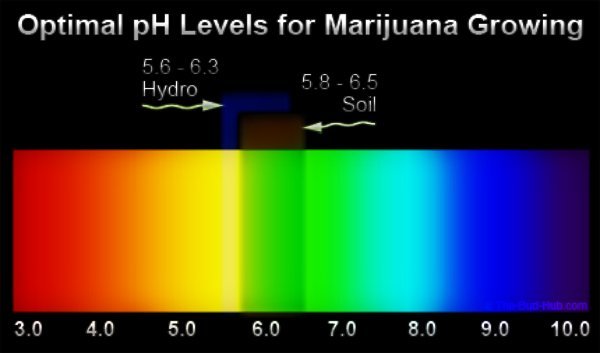
There is a huge benefit to growing in Containers. This method creates a “Modular System” Allowing you to move a Plant not getting enough Light. Or perhaps you find a Plant with a Viroid Infection or Insect Infestation this unit can be removed completely from the Grow. Cover the Entire Plant with a Large Garbage bag or Plastic, trying not to disturb it while doing so.
Cover the Entire Plant and the Container. Take it then to the “Temple”!
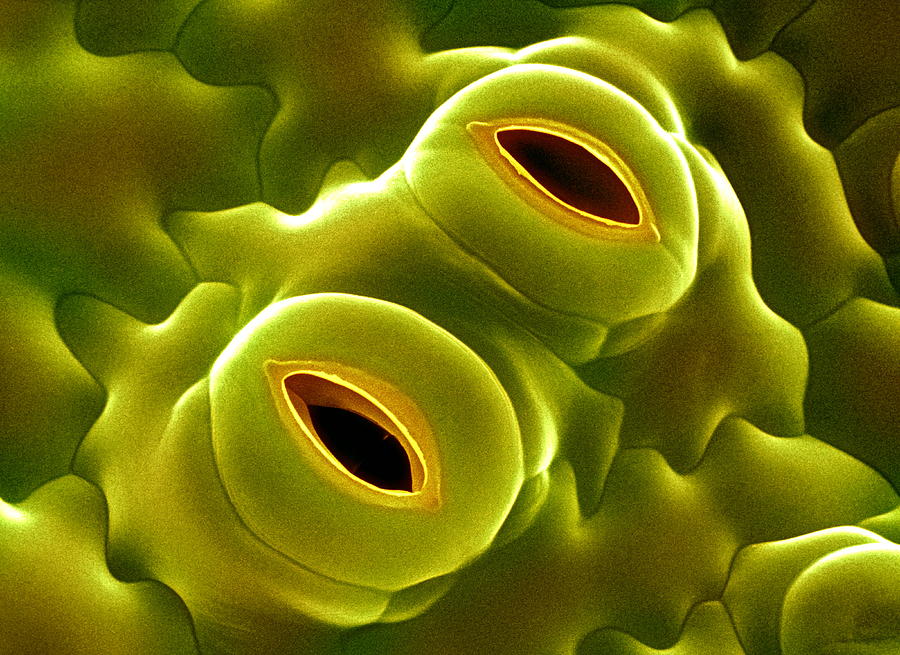
Close up of Cannabis Leaf surface. Showing the Stomata.
Nutrients in Cannabis Growth and Yield
Nutrients play a vital role in the growth and development of cannabis plants. They can be divided into three main groups: macronutrients, micronutrients, and secondary nutrients. Each group of nutrients has specific functions and is essential for the plant’s growth.
- Macronutrients: These are the primary nutrients required by the plant in large quantities. They include nitrogen (N), phosphorus (P), and potassium (K). Nitrogen is crucial for the growth of leaves and overall plant structure, while phosphorus is essential for root development and flowering. Potassium is vital for photosynthesis and overall plant health.
- Micronutrients: These are required in smaller quantities but are equally important for the plant’s growth. Micronutrients include iron (Fe), manganese (Mn), zinc (Zn), and copper (Cu). They play essential roles in various metabolic processes and help protect the plant against diseases and pests.
- Secondary Nutrients: These nutrients, such as calcium (Ca), magnesium (Mg), and sulfur (S), are essential for the plant’s growth but are not as critical as macronutrients and micronutrients. They contribute to the overall health and structure of the plant.
Some “Terms” you should become Familiar with:
Senescence and Abscission
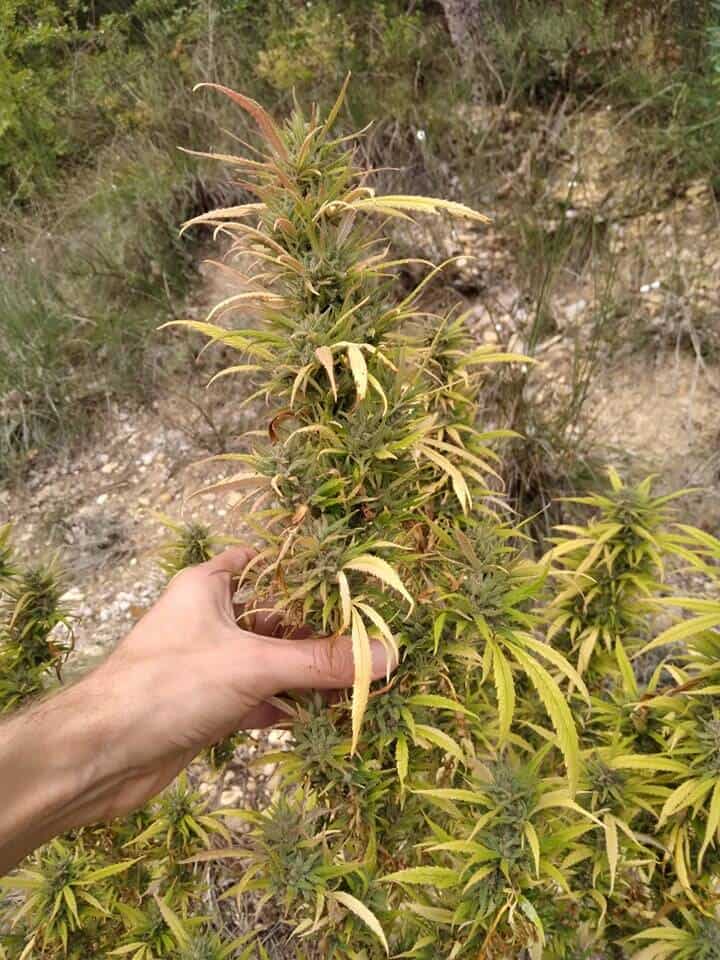
Senescence is an age-related process where plant parts grow old, deteriorate, and die. Abscission is a seasonal process where plants shed leaves, needles, or other parts to minimize water loss or protect themselves. It is normal to see a lot of your Cannabis Leaves turning Yellow and Falling off your plants in the last stages of their growth. Healthy leaves progress from active photosynthesis through Senescence.
Abscission
The abscission of leaves is caused by seasonal changes, whereby a reduction in sunlight triggers a decrease in chlorophyll and photosynthesis. This process, in turn, causes a programmed self-pruning that is characteristic of abscission.
Where is the leaf abscission zone?
The leaf abscission zone can be found just under the leaf’s petiole (stem). It is comprised of two layers of cells: a weak layer and an expanding layer. In the autumn, the expanding layer breaks the cells in the weak layer, separating the leaf and allowing it to drop.
What is the purpose of abscission layer?
The abscission layer is a layer of cells whose purpose, given the right conditions, is to break down in the autumn. This process allows leaves to drop seasonally, preserving moisture and protecting the tree or plant.
What is the process of abscission?
Abscission is the process that trees and other plants undergo during the autumn to shed some or all of their leaves. The process has three steps: resorption, protective layer formation, and detachment.
- All plants shed their leaves. Some do it seasonally when changes in sunlight precede the coming of winter. For them, it is a matter of self-preservation, preserving moisture for the dark season ahead, preventing frost damage, and protecting themselves from pathogens. For others, it is a matter of age. Leaves reach the end of their life cycle and need to be replaced by new branches on new heights.
Leaf Abscission is simply the process by which deciduous trees or plants drop leaves seasonally. It is a process of self-pruning. And the reason it happens can be traced back to microscopic changes that occur at the cellular level.
More valuable Cannabis Plant Hormones and their Purpose:
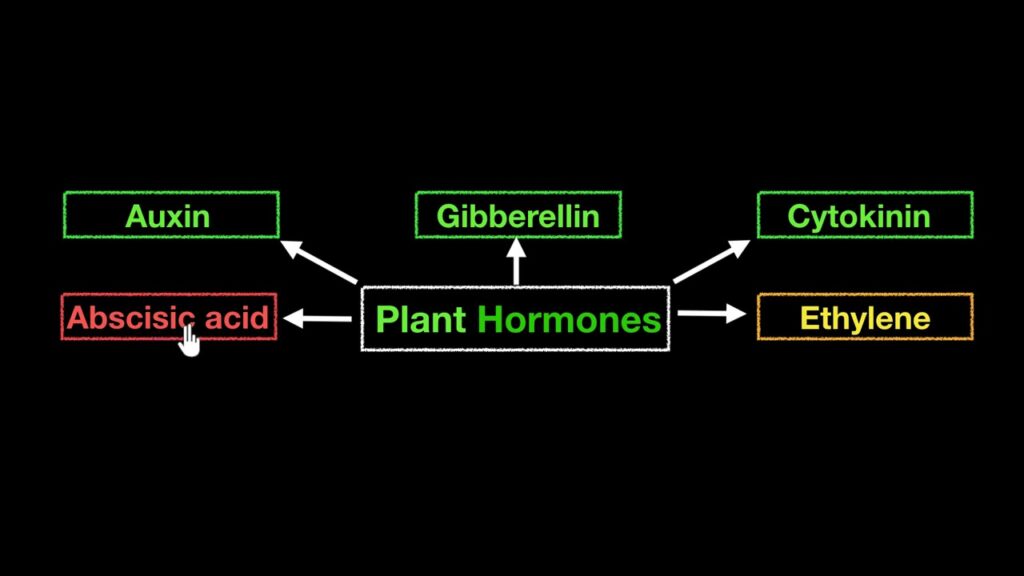
You’re probably aware that the hormones we humans produce can have a marked effect on our behavior, metabolism and physical development, but it’s not just us that do this, it’s a common trait to almost all other organisms, and even plants synthesize hormones too. Over the course of a plant’s life cycle, almost all aspects of its activity, of its growth and its development, are controlled by these organic chemicals that the plants naturally produce for themselves, and which we call phytohormones.
These plant hormones not only regulate the morphology and metabolism of plants but also determine how the plants respond to environmental factors such as stress and physical damage caused by weather conditions, pests or pathogens. Let us take a look at the most common phytohormones, the effects they have on plants, and some ways that Growers can harness the huge potential of natural plant hormones to their own benefit.
Coconut water is a rich source of many different phytohormones, in particular, Cytokinins. For Example…
Hormones can be defined as natural organic chemical messengers or signals that are produced by an organism to control the way its cell’s function. These hormones are normally synthesized in very small amounts by specialist cells in one part of the organism, before being transported to the part where they take effect.
Watch the Apical Meristems of your Plants closely for any irregularities. (the Apical Meristem is the tips or new growth) This is an excellent way to determine the health of a plant. I will periodically shake the Dirt of some Plants at Harvest to see the Apical Meristems on that Plants Rhizone in an effort to ascertain how my Soil is performing.
Also to see how the establishment of Beneficial Fungi have established and been working. Looking for earthworms and more.
Humans and other animals do this by means of an endocrine system, a network of glands that have evolved to produce and store hormones which are then moved to their target site through the body’s circulatory system.
Plants, however, do not possess an endocrine system. Instead, all plant cells have the potential to synthesize hormones, which are then either transported via vascular tissue as well as cell-to-cell through a process known as plasmodesmata or on occasion used locally.
We can generally categorize the individual phytohormones as working to either promote, inhibit or otherwise affect growth in one way or another. However, it is largely the interaction between these phytohormones that determines the changes to the plant’s metabolic processes, rather than the action of one single plant hormone in isolation.
This means that a plant’s reactions to changes in the levels of any one hormone will depend upon the action of multiple phytohormones, with quite diverse effects being observed when the ratios between them are changed. Some hormones will inhibit the action of others, For example, seed germination is mostly brought about as a result of changes in the balance between levels of Abscisic acid, which inhibits germination, and Gibberellic acid, which promotes it.
Similarly, the process of senescence or the natural ageing process of plants is the result of the complex interplay between various hormones, including ethylene, auxin, cytokinin and gibberellin.
Another good example of this is the change to the flowering photoperiod in our grow room. When the plants are triggered to begin flowering, they wind down auxin production and start to increase the production of not only gibberellin (responsible for the stretching at the onset of bloom) but also of cytokinin, which has the effect of promoting new shoots and flowering tips.
Some growers take advantage of this by using a cultivation technique called “Monster Cropping”, by which they revert plants back into vegetative growth after a couple of weeks of 12/12 photoperiod, at which time the high levels of endogenous cytokinin will greatly increase branching, leading to more bud sites and higher yields when the plant is finally flowered.
The Five principal plant hormones:
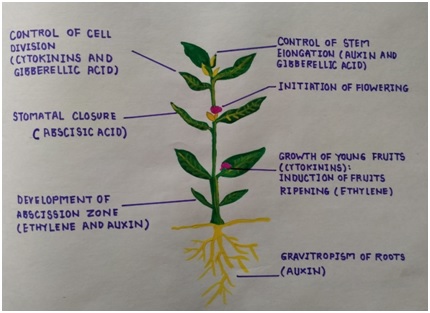
Auxins
Auxins play a significant role in the following processes:
- Cell division and elongation – leading to taller, stronger stems
- Leaf formation, senescence and abscision
- Root formation and development – lateral, secondary and adventitious roots
- Apical dominance – favoring vertical growth
- Flower development
- Phototropism and geotropism/gravitropism – plant growth reaction react to light and gravity.
Auxins
Auxins are the principal group of growth control hormones and were the first of the phytohormones to be studied. The effects they caused were noted by ancient scholars, but it was Charles Darwin who first explored the mechanism by which plants use these chemical messengers to control growth. In experiments dealing with phototropism, he demonstrated that the light sensed by the tip of a seedling caused the stem to bend towards the direction of the light.
Lentil sprouts are a great source of auxins. The most important and widely studied auxin is Indole Acetic Acid (IAA), which is synthesized in the plant’s main growing tip (the apical shoot) and transported downwards to the rest of the plant, both via the phloem and cell-to-cell, with the effect of its action diminishing the further down the plant we go. By keeping an eye upon your Plants Apical Shoots, this will provide an excellent indication of your Grow.
This is the number 1 way I watch 1000s of Plants. I cannot possibly watch 10000 Plants closely. If I see a “Witches Broom (Viroid Infection) or a Pest Infestation, I will go gather a Trash Bag. Cover the entire Plant (including its’ Growing Container). Tie the Bottom Closed and remove and burn it!
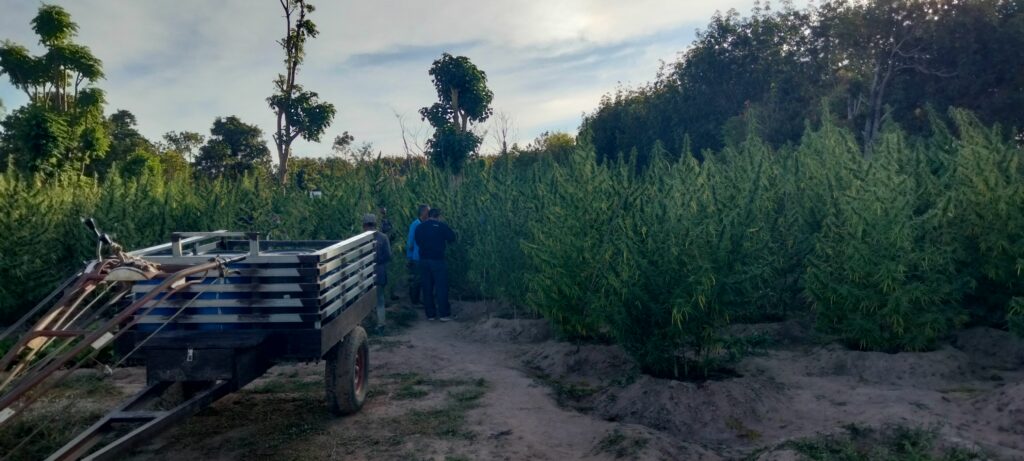
IAA occurs in particularly high concentrations in the young shoots of willow trees and is also found alongside other phytohormones in Kelp and Coconut water. I put Coconut water in the Tea I make. IAA is frequently used in rooting compounds and often replaced with indole-3-butyric acid (IBA), a synthetic version which is the active ingredient in the most popular rooting gels like Clonex.
As with all hormones, auxins are synthesized in minute amounts, and highly concentrated doses will have a severe growth-inhibiting effect. Indeed, some synthetic auxins are used as selective weed-killers for lawns, as they only affect dicot plants (with two seed leaves) and not grass, which is a monocot.
Growers can take advantage of auxins in our garden, either to promote rooting or as a general growth stimulant for our plants during the vegetative growth period. A simple way to source auxins is by making a seed sprout tea with legume grains such as lentils or chickpeas.
In addition to providing auxins from external sources, we can also alter the balance of auxins in our plants by physical means. When we prune the tips of our plants, we are removing the source of the auxins, which has the effect of reducing apical dominance, alternatively, when we train our plants with LST (Low-Stress Training) we are relying on the phototropic and geotropic effects of auxin activity to shape the plant in the desired way.
Cytokinins
Cytokinins play an important role in:
- Promoting cell division, cell enlargement and differentiation
- Promote the development of adventitious roots and axillary buds, leaf formation and enlargement
- Breaking seed dormancy by increasing metabolic activity
- Reducing apical dominance
- Delaying senescence – leaves treated with cytokinin will stay greener for longer. (Richard Lang effect)
- Stimulating morphogenesis in tissue culture (shoot initiation/bud formation)
- Also has some effect on nutritional signaling
The most common naturally occurring cytokinin is Zeatin, first isolated from corn in 1961. Cytokinins promote the physical process of cell division by enhancing Cytokinesis, the point when a cell splits into two daughter cells. They are thought to be synthesized in the plants’ roots and then transported to the nodes and shoots via the xylem, with its effect reducing progressively the further up the plant we go, in the opposite way to auxins.
Indeed, it is the balance between auxins and cytokinins that means plants are generally wider and more bushy at the bottom than at the top. When the ratio is equal, simple cell division without differentiation is promoted, a function which has become very useful to produce callus material as part of the tissue culture process.
Maize is a great source of cytokinins and perfect for a seed sprout tea to apply in flower and veg stages.
The senescence-delaying effects of cytokinins are of great use in the agriculture and horticulture industries, where they are employed in various ways, from increasing yields in crops to preventing fruit and leaves from discoloration during post-harvest transportation. They are also frequently applied to cut flowers to keep them looking fresh and vibrant for as long as possible.
Cytokinins
Found naturally alongside other phytohormones in seaweed and coconut water, and also in high concentrations in corn/maize grains, which we can use to make a seed sprout tea (SST) which we apply to our plants via irrigation. This makes an ideal growth stimulant for the vegetative and the flowering phase, causing the plant to develop a greater number of thicker, stronger stems and branches, resulting in bigger flowers and heavier harvests.
Gibberellins
Key to many processes in plants, including:
- Stimulate cell elongation
- Stimulate germination
- Flower induction
- Trichome development
- Promote bud development
- Delaying senescence
- Root development
- Response to environmental stress
- Sex expression
Gibberellins are growth-promoting phytohormones that act as general plant growth stimulants, playing an important role in many of the metabolic functions of vascular plants. Gibberellins promote germination by breaking seed dormancy, they are key to flower initiation and also promote bud and trichome development, stem elongation and root development. Gibberellins also help plants to respond to stress caused by environmental factors. They are present in the growing parts of plants, the apical bud, flower stamens, young leaves and the root system.
Seaweed/Kelp is a great source of gibberellins, alongside auxins and cytokinins.
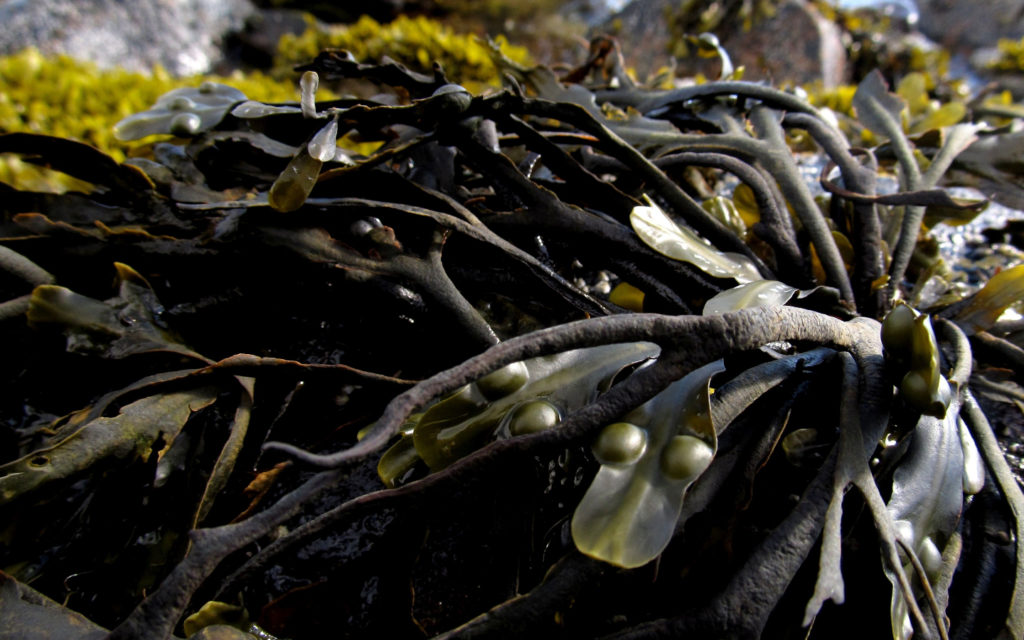
I buy my Seaweed from the Internet and this is an integral part of all my Grows. I apply Seaweed via the Teas I make. I use Tea in all my Grows as the Soil Mix takes a lot of work and is expensive to make. Teas replace many of the Micro and Macro Nutrients used by the prior grow. This is the old style. Now that I have Finances I use new Soil and Pots. If you need assistance in acquiring Cloth Pots I can help wih a source and a great Discount when buying 5000 or more!
This next grow the Soil has been “Cooking” for 2 years. I am excited to see how these Girls grow. I work so hard to make great soil for them. They always grow through to the bottom of the Grow Container and into the Earth underneath. Disrespecting my hard work. Next time I may put a plastic disc at the bottom to prevent this, yet I do not want to create root lock. A perfect example of how ever after 40 years of growing Cannabis I am still learning!
Many different types of Gibberellin (GA) have been identified, of which gibberellic acid (GA3) is the most well-known, the most effective and widely available form. It was first discovered in the 1920s by Japanese scientists when they observed that a fungus called Gibberella fujikuroi promoted abnormally elongated growth in rice plants.
Today this fungus is still the principal natural source of commercial gibberellic acid extraction for use in agriculture, but it is also extracted from the anthers of rice plants, corn pollen and seeds, wheat seedlings and barley plants.
Dwarfing in plants is often symptomatic of a gibberellin deficiency, while an excess of GA will lead to the development of long, spindly stems that cannot support the plant. The different types of Gibberellins have a wide range of commercial applications in horticulture and agriculture where they are used to control plant morphology and metabolism, notably in the commercial flower industry, where they are employed to keep foliage green and give longer flower life.
This is a perfect example of why a Grow needs an experienced Grower. Learning here on the net is one way for sure. Yet how is your “Consultant” going to know the difference between a Viroid infection and a Bacterial infection or an Infestation of some sort?
In agriculture, GA is applied to various commercial crops to increase fruit size and yield, as well as to control other aspects of the fruiting process. In this respect, the dosage is everything, with very little margin between a dose that can induce flowering and one that suppresses it completely.
GA3 is also used by Cannabis Growers in some situations, albeit infrequently, mostly to assist in the germination of old seeds, but is also occasionally used to make feminized seeds, because when applied in the correct concentration, it induces the development of male flowers on female plants (sex reversal) although this method has largely been replaced by STS (Silver Thiosulphate).
Gibberellic acid can be bought in its pure form for these specialist applications, but for general gardening use the best source is the wide range of kelp/seaweed products currently available on the market, which also contain high concentrations of auxins and cytokinins, as well as macro and micro-nutrients, making for a great all-round plant growth stimulator, perfect to use from germination right through to the flowering period. I use Seaweed in all of my Grows.
Abscisic Acid
Has the following functions:
- Inhibits shoot growth
- Promotes seed dormancy
- Stimulates closing of stomata, halting transpiration
- Environmental stress response
- Inhibits fruit-ripening
- Anthocyanin (color) development
- Abscission of flowers and fruits
- Leaf senescence
- Promotes rooting
While all the other hormones we’ve looked at have promoted growth in some way, Abscisic acid works to inhibit growth, counteracting the effects of the other phytohormones.
Abscisic acid (ABA)
First isolated from cotton fruit in the early 1960s. It was first known as Dormin and is sometimes still referred to as a stress hormone. It was named abscisic acid because it was originally thought to be the hormone responsible for abscission in plants (the detachment of leaves and fruit), although it was later discovered to play only a minor role in this process.
It is, however, key to stress response and plant survival, preventing seeds from germinating in the harsh winter cold which would kill them, and stopping plants from developing new leaves in a drought.
ABA promotes dormancy in seeds and buds and inhibits ripening in fruit. It also inhibits photosynthesis, delays cell division and reduces transpiration. These effects are a normal part of the plants’ natural cycle through the seasons, but ABA also has an important part in responding to environmental stresses caused by drought, cold, heat, soil salinity, as well as responding to pest and pathogen damage.
Plants produce abscisic acid in their terminal buds as winter approaches, which works to halt growth in preparation for the coming cold weather. In drought conditions, ABA is produced in the roots and then transported to the leaves, where it stimulates the closing of stomata, temporarily halting transpiration and reducing water demand in times of scarcity.
ABA has its uses in agriculture and is mostly applied to crops as an anti-drought measure, acting to reduce transpiration and photosynthesis to delay wilting and keep plants alive during brief periods of intense dryness. It can be used to prolong dormancy in seeds and plants, and is also used to enhance color development in red table grapes by stimulating anthocyanin biosynthesis.
Ethylene
- Stimulates and regulates fruit ripening
- Induces seed germination
- Stimulates leaf senescence
- Induces leaf abscission
- Helps plants survive low oxygen situations eg. flooding
- Stress response, particularly to salinity
- Increases petiole and internode length
- Sex determination
- Female flower development
Ethylene or Ethene is a gaseous, flammable hydrocarbon that is hugely versatile and widely used in the chemical industry. Indeed, its production exceeds that of any other organic compound in the world, and much of this production is destined to making polyethylene, one of today’s most widely used plastics.
I have yet to find this in Thailand….
Ethylene occurs naturally through the breakdown of methylene and is produced in all parts of the plant, particularly in cells undergoing senescence and in ripening fruit. Its action counteracts the effect of auxin and is what triggers the ageing process in plants. Its main effects are to promote senescence and the ripening of fruit. It also increases petiole length and internode distance. Ethylene plays a part in breaking seed dormancy and promoting germination.
As fruits like when bananas ripen, they produce ethylene. The “petiole” is the stalk that attaches the leaf blade to the stem.
The balance between auxin and ethylene has an important role to play in leaf abscission at the end of the growing season when the cold weather triggers ethylene production at the same time as auxin levels are reducing within the ageing leaf. Last of the Flowering Cycle”
Ethylene is key to sexual expression in many plants, cannabis included, with female flowers requiring much more ethylene to develop than male flowers. By applying ethylene-inhibiting agents such as STS (Sliver Thiosulphate) we can induce male flowers on female plants to create feminized seeds.
It is highly valued in commercial agriculture, where it is employed on a huge scale to ripen fruit that by necessity must be picked early to ensure damage-free transport. In these massive commercial ripening operations, ethanol is converted to ethylene and pumped in to ripen fruit, but man has used the ripening effect of ethylene at least since ancient Egyptian times when they would cut figs to ripen them, as ethylene production is stimulated by physical damage.
This is the reason that we enclose fruit in a paper bag to accelerate ripening, or that fruit will ripen more quickly if we add a mature apple or banana to our fruit bowl.
On the other hand, the ethylene naturally produced by fruit can also cause problems in the transport and storage of fruit, dramatically reducing shelf life and leading to losses due to spoiled produce. Indeed, this phenomenon is the origin of the phrase “one bad apple can spoil the whole bunch”.
More Phytohormones:

Triacontanol.
A naturally occurring phytohormone found in epicuticular plant waxes, in beeswax, and most notably in high concentrations in alfalfa. It is a potent growth stimulant which raises levels of chlorophyll in leaves, thus increasing photosynthesis while increasing the rate of cell growth and division. Triacontanol can be applied to our plants in the form of a botanical tea made with fresh alfalfa plants, dried plants or alfalfa meal, and also as a seed sprout tea using alfalfa seeds. It’s worth bearing in mind that these preparations with alfalfa are generally quite potent, so go carefully with the dosage and make sure you start applying in low concentrations to avoid any adverse effects.
Alfalfa is a rich source of Triacontonol, a very potent plant growth hormone
Jasmonates
The principal of which is Jasmonic Acid (JA), originally isolated from Jasmine Oil. Jasmonates have an important part in plant response to tissue damage, acting to slow growth while redirecting the plant’s metabolism towards repairing the damaged tissue. Jasmonates are synthesized in response to damage from pest or pathogen attack and lead to the expression of defence genes. Part of this self-defense action is the promotion of trichome formation.
Jasmonates have a powerful senescence-promoting effect, they can inhibit seedling growth, leaf expansion and root growth. They also play a part in flowering, related to sex determination, promoting fertility and regulating the onset of flowering. Jasmonates can promote the germination of dormant seeds and, conversely, inhibit germination in non-dormant seeds. Methyl Jasmonate, which is derived from jamsonic acid, is commonly used to increase plant resistance in horticulture.
Brassinosteroids
The first of these growth-promoting plant hormones to be isolated was Brassinolide, from Brassica Napus (oilseed rape) pollen, but brassinosteroids are present in many plants. Mutant dwarf plants are often brassinosteroid-deficient. Brassinostreiods work alongside auxins to promote cell expansion and elongation, play a key role in pollination and has some part in cell division.
They promote vascular differentiation and are involved in accelerating senescence in dying cells. They have also been shown to give some protection against cold and drought stress. Studies show that Brassinosteroids could be of great use in agriculture as a low-impact, environmentally-friendly PGR to strengthen plants.
Salicylic Acid
A natural precursor to the drug Aspirin. Found naturally in high concentrations in willow tree shoots, and also in Aloe Vera leaves. Works to encourage rooting and defence signalling, being crucial to induce systemic acquired resistance (SAR), the plants’ auto defence response against pest and pathogen attack.
Salicylic acid helps mitigate heat and hydric stress, and plays an important role in growth and development, affecting seed germination, photosynthesis, flowering and senescence. We can harness these benefits by making “willow water”, a simple infusion of fresh willow shoots in boiling water left to steep overnight, which we can then apply to plants via irrigation or foliar spray to encourage rooting and general plant health.
This is why you will see a lot of Growers using Aloe Leaves for making Clones!
Young willow branches and shoots are high in salicylic acid, ideal for rooting clones. Use Baking Soda in a Sterile water solution of 1 teaspoon per litre once every 4 days or so when your spraying Clones to increase humidity levels in you clone area. Fungus hates Baking Soda and it has worked for me!
Strigolactones
Works to inhibit branching through its control of auxin secretion. It is also linked to the synthesis of Abscisic Acid. Strigolactones are crucial to the relationship between plants and symbiotic fungi, stimulating the germination of mycorrhizal spores, and are essential to the exchange of nutrients between roots and fungi, and vice-versa.
They also play a key role in the germination of parasitic plants of the genus Striga, which parasitize the root zone of host plants, causing serious losses in crops such as maize, rice, legumes, sugarcane among others. Strigolactones have been identified to be responsible for three different physiological processes:
First, they promote the germination of parasitic organisms that grow in the host plant’s roots, such as Striga Lutea and other plants of the genus Striga. Secondly, Strigolactones are fundamental for the recognition of the plant by symbiotic Fungi, especially Arbuscular Mycorrhizal fungi, because they establish a mutualistic association with these plants, and provide phosphate and other soil nutrients.
Third, Strigolactones have been identified as branching inhibition hormones in plants; when present, these compounds prevent excess Bud growing in stem terminals, Also stopping the branching mechanism in plants. Yea, Lots of big words. If you are a Professional Grower, knowing this stuff will give you the “Edge”!!
Traumatic acid
Biosynthesised by plants from traumatin, (Easy to Remember Think of Trauma!) Traumatic acid is a potent wound response hormone that works by stimulating cell division in response to damage, forming callous material and protecting the wound.
Florigen
Scientists have proven the existence of this flowering-inducing hormone or hormone-like molecule linked to the process of photoperiodism, although despite decades of research its mechanism is still a mystery. It was shown that grafting a leaf taken from a flowering plant onto a non-flowering plant was enough to induce flowering in the latter despite being kept in a non-flowering photoperiod.
The same leaf can be removed and grafted onto another plant, giving the same results. Efforts to isolate and identify this molecule are ongoing, but it could theoretically be of great use to Cannabis growers, potentially enabling photoperiod-independent flowering in non-auto genetics.
The phytohormone Florigen is what incites the transition to flowering in plants
Back in the Day” I thought that the Sun having to travel farter through the Atmosphere making the “Light” more of an Orange Color, temperature changes and other things were what made my Plants do things.

For Example using only Sodium Lights. I still will leave on 20 or 30 Metal Halide (1000 Watts) mixing them in with 50 or 60 HPS (1000 Watts as well) More power put in has always paid off in any of my Grows. I have never been burned by an LED Light Grow. Yea they are more “efficient”. Yet I am a Scientist!!
Turns out 30-40 years later I have and still am learning about Hormones and more. Never stop learning!!


